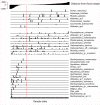Limitations to the Use of Species-Distribution Models for Environmental-Impact Assessments in the Amazon
- PMID: 26784891
- PMCID: PMC4718640
- DOI: 10.1371/journal.pone.0146543
Limitations to the Use of Species-Distribution Models for Environmental-Impact Assessments in the Amazon
Abstract
Species-distribution models (SDM) are tools with potential to inform environmental-impact studies (EIA). However, they are not always appropriate and may result in improper and expensive mitigation and compensation if their limitations are not understood by decision makers. Here, we examine the use of SDM for frogs that were used in impact assessment using data obtained from the EIA of a hydroelectric project located in the Amazon Basin in Brazil. The results show that lack of knowledge of species distributions limits the appropriate use of SDM in the Amazon region for most target species. Because most of these targets are newly described and their distributions poorly known, data about their distributions are insufficient to be effectively used in SDM. Surveys that are mandatory for the EIA are often conducted only near the area under assessment, and so models must extrapolate well beyond the sampled area to inform decisions made at much larger spatial scales, such as defining areas to be used to offset the negative effects of the projects. Using distributions of better-known species in simulations, we show that geographical-extrapolations based on limited information of species ranges often lead to spurious results. We conclude that the use of SDM as evidence to support project-licensing decisions in the Amazon requires much greater area sampling for impact studies, or, alternatively, integrated and comparative survey strategies, to improve biodiversity sampling. When more detailed distribution information is unavailable, SDM will produce results that generate uncertain and untestable decisions regarding impact assessment. In many cases, SDM is unlikely to be better than the use of expert opinion.
Conflict of interest statement
Figures





References
-
- Araújo MB, Densham PJ, Williams PH. Representing species in reserves from patterns of assemblage diversity. J Biogeogr. 2014;31: 1037–1050. 10.1111/j.1365-2699.2004.01051.x - DOI
-
- Syfert MM, Joppa L, Smith MJ, Coomes DA, Bachman SP, Brummitt NA. Using species distribution models to inform IUCN Red List assessments. Ecol Modell. 2014;177: 174–184. 10.1016/j.biocon.2014.06.012 - DOI
-
- Tôrres NM, Vercillo UE. Como ferramentas de modelagem de distribuição de espécies podem subsidiar ações de governo? Natureza & Conservação. 2012;10(2): 228–230. Available: http://doi.editoracubo.com.br/10.4322/natcon.2012.023 - DOI
Publication types
MeSH terms
LinkOut - more resources
Full Text Sources
Other Literature Sources

